-
 Bitcoin
Bitcoin $104,726.7569
1.64% -
 Ethereum
Ethereum $2,498.7221
-2.84% -
 Tether USDt
Tether USDt $1.0006
0.04% -
 XRP
XRP $2.1735
0.55% -
 BNB
BNB $646.1374
-0.92% -
 Solana
Solana $149.9892
0.67% -
 USDC
USDC $0.9998
-0.02% -
 Dogecoin
Dogecoin $0.1795
0.23% -
 TRON
TRON $0.2773
1.50% -
 Cardano
Cardano $0.6656
0.97% -
 Hyperliquid
Hyperliquid $34.2378
1.08% -
 Sui
Sui $3.1670
3.57% -
 Chainlink
Chainlink $13.5178
0.00% -
 UNUS SED LEO
UNUS SED LEO $9.0231
2.03% -
 Avalanche
Avalanche $19.5829
-0.30% -
 Stellar
Stellar $0.2642
0.86% -
 Bitcoin Cash
Bitcoin Cash $396.9586
-0.12% -
 Toncoin
Toncoin $3.1464
-1.41% -
 Shiba Inu
Shiba Inu $0.0...01251
-0.40% -
 Hedera
Hedera $0.1656
0.67% -
 Litecoin
Litecoin $86.6370
0.15% -
 Polkadot
Polkadot $3.9270
-0.85% -
 Monero
Monero $323.6381
2.68% -
 Ethena USDe
Ethena USDe $1.0013
0.05% -
 Bitget Token
Bitget Token $4.6330
0.97% -
 Dai
Dai $0.9998
0.01% -
 Pepe
Pepe $0.0...01110
-1.90% -
 Pi
Pi $0.6228
0.49% -
 Aave
Aave $252.7413
-0.44% -
 Uniswap
Uniswap $6.0759
-1.66%
How to adjust the "API request frequency limit" error encountered by Kraken Exchange?
Kraken's API rate limits protect servers; exceeding them triggers error messages. Optimize code by batching requests, caching data, and using asynchronous operations to avoid these limits and ensure smooth trading.
Mar 25, 2025 at 12:14 am
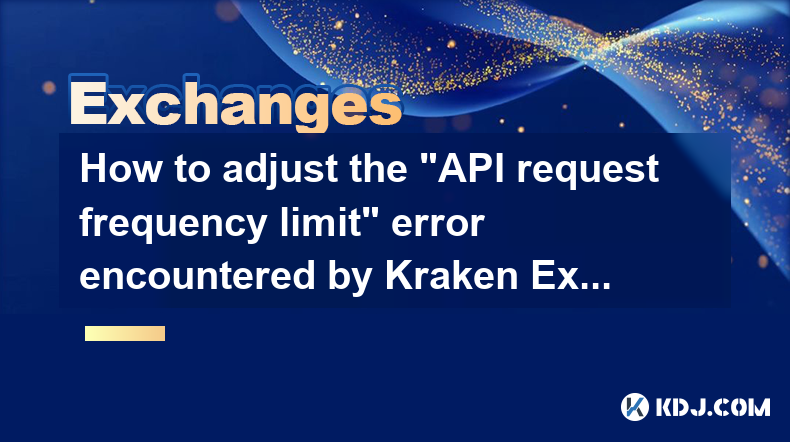
Key Points:
- Understanding Kraken's API rate limits and their causes.
- Identifying the specific error message related to API request frequency limits.
- Implementing strategies to reduce API requests and optimize your code.
- Utilizing Kraken's documentation and support resources.
- Exploring alternative solutions like using a different API or adjusting your trading strategy.
How to Adjust the "API Request Frequency Limit" Error Encountered by Kraken Exchange?
The Kraken exchange, like many other cryptocurrency exchanges, implements API rate limits to protect its servers from overload and ensure fair access for all users. Exceeding these limits results in an error message indicating you've reached your request frequency limit. This article explores how to troubleshoot and resolve this common issue.
Understanding Kraken's API Rate Limits
Kraken's API rate limits are defined as the maximum number of requests you can make within a specific time frame. These limits vary depending on the type of API request (e.g., fetching account balances versus placing an order) and your API key's access level. Exceeding these limits triggers the error, temporarily blocking further requests from your application.
Identifying the Error Message
The exact wording of the error message might vary, but it will clearly state that you've exceeded the API request frequency limit. Carefully examine the error response from Kraken's API to understand the specifics, such as the remaining requests allowed before the next reset and the time until the limit resets.
Strategies to Reduce API Requests
The most effective way to avoid exceeding Kraken's API request frequency limits is to optimize your code and reduce unnecessary requests. Here are several strategies:
- Batch Requests: Instead of making multiple individual requests, combine them into a single batch request whenever possible. Many API endpoints support this.
- Caching: Store frequently accessed data locally (in memory or a database) to avoid repeatedly fetching it from the Kraken API. Use appropriate caching mechanisms to manage data freshness.
- Efficient Data Retrieval: Carefully design your queries to only retrieve the necessary data. Avoid retrieving large datasets if you only need a subset of the information.
- Rate Limiting Implementation: Implement your own rate limiting within your application to ensure you don't accidentally exceed Kraken's limits. Use timers and counters to track requests.
- Asynchronous Operations: If your application allows, use asynchronous operations to make multiple API requests concurrently without blocking the main thread.
Utilizing Kraken's Documentation and Support
Kraken provides comprehensive API documentation outlining the rate limits for each endpoint. Thoroughly review this documentation to understand the limits applicable to your specific use case. If you're still experiencing issues, contact Kraken's support team for assistance. They may be able to provide further guidance or adjust your API access levels.
Exploring Alternative Solutions
If optimizing your code isn't sufficient, consider alternative solutions. You could explore using a different API that offers higher request limits or less restrictive rate limiting policies. This might involve changing your trading strategy or utilizing a different service entirely.
Adjusting Your Trading Strategy
Your trading strategy might contribute to excessive API calls. Consider less frequent trading or utilizing different order types that require fewer API interactions. Analyzing your trading patterns and adjusting them can significantly reduce your API request frequency.
Understanding Error Codes
Kraken's API returns specific error codes to help you diagnose problems. Familiarize yourself with these codes to quickly identify rate limiting issues. This will allow for more rapid problem solving and prevent extended disruptions to your trading activities. Pay close attention to the error messages provided by the API, as they contain valuable debugging information.
Implementing Exponential Backoff
In case of repeated rate limit errors, implementing exponential backoff is a good strategy. This involves increasing the delay between subsequent requests after encountering a rate limit error. This prevents overwhelming the server and allows for more graceful recovery.
Monitoring API Usage
Regularly monitor your API usage to identify potential bottlenecks and areas for improvement. Tracking your request rates will help you proactively address potential rate limit issues before they disrupt your trading activities. Many tools can aid in this process.
Choosing the Right API Key
Ensure you're using the appropriate API key with the necessary permissions for your operations. Different API keys might have different rate limits. Using an overly permissive key might lead to higher consumption rates, thus increasing the chances of hitting the limits.
Using a Proxy Server
While not directly addressing the API limit, a well-configured proxy server can help distribute your requests and potentially alleviate the load on your IP address. This is not a solution in itself, but it could improve performance in some cases.
Frequently Asked Questions:
Q: What happens if I exceed Kraken's API request frequency limit?
A: You will receive an error message indicating you've exceeded the limit. Further requests from your application will be temporarily blocked until the limit resets.
Q: How can I find out Kraken's API rate limits?
A: Consult Kraken's official API documentation. It provides detailed information about rate limits for each endpoint.
Q: Can I increase my API request limits?
A: Contact Kraken support. They may be able to adjust your limits based on your needs and usage patterns, but this is not guaranteed.
Q: What if I consistently hit the rate limit even after optimization?
A: Consider alternative solutions, such as using a different API or adjusting your trading strategy to reduce the frequency of API calls. You may also need to investigate whether your application has unexpected behavior leading to more API calls than intended.
Disclaimer:info@kdj.com
The information provided is not trading advice. kdj.com does not assume any responsibility for any investments made based on the information provided in this article. Cryptocurrencies are highly volatile and it is highly recommended that you invest with caution after thorough research!
If you believe that the content used on this website infringes your copyright, please contact us immediately (info@kdj.com) and we will delete it promptly.
- Alpaca Finance (ALPACA)
- 2025-06-07 02:10:13
- Arbitrum’s 200 million ARB Gaming Catalyst Program, now rebranded to Arbitrum Gaming Ventures, has announced its first $10 million cohort of investments and grants.
- 2025-06-07 02:10:13
- Getting Started with Bitcoin Has Never Been Easier. Meet Bitcoin Solaris, Mobile-First Crypto Mining
- 2025-06-07 02:05:12
- $PEPE /USDT – Bull Run Alert: Meme Madness Heating Up!
- 2025-06-07 02:05:12
- The ether-bitcoin (ETH/BTC) ratio has reached an “extremely undervalued” zone
- 2025-06-07 02:00:20
- Ether breaks multimonth downtrend as traders target $3,000 ETH price
- 2025-06-07 02:00:20
Related knowledge
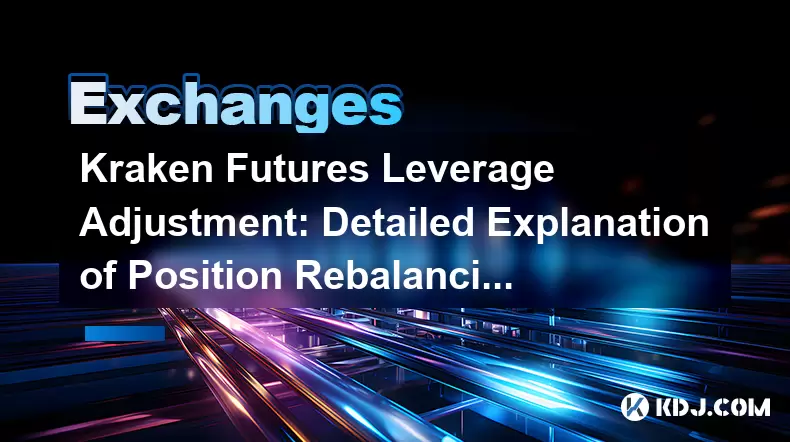
Kraken Futures Leverage Adjustment: Detailed Explanation of Position Rebalancing Operation Steps
Jun 06,2025 at 10:36am
Kraken Futures offers traders the ability to adjust leverage on their positions, which is a crucial aspect of managing risk and maximizing potential returns. In this article, we will delve into the detailed steps of how to perform a leverage adjustment and rebalance your positions on Kraken Futures. Whether you are a seasoned trader or new to the platfo...

Kraken Cross-Product Arbitrage: Analysis of Correlation Trading Strategy Skills
May 31,2025 at 04:08am
Introduction to Kraken Cross-Product ArbitrageKraken, one of the leading cryptocurrency exchanges, offers a diverse range of trading products, including spot trading, margin trading, and futures trading. Cross-product arbitrage on Kraken involves exploiting price differences between these different trading products to generate profits. This strategy req...
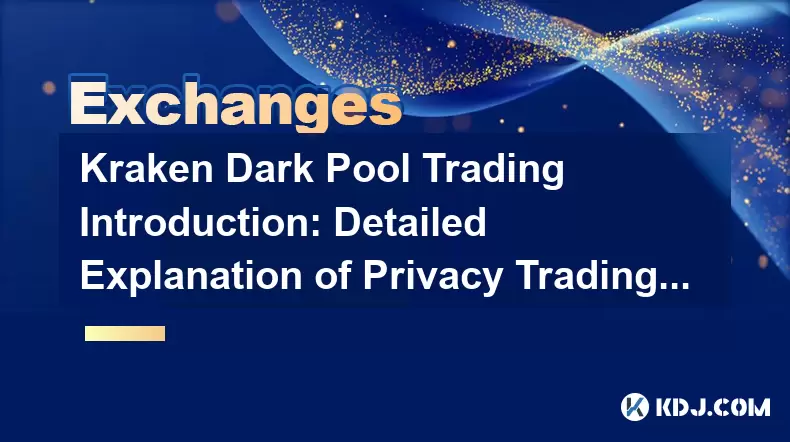
Kraken Dark Pool Trading Introduction: Detailed Explanation of Privacy Trading Operation Steps
Jun 02,2025 at 12:14pm
Kraken, one of the leading cryptocurrency exchanges, offers a unique feature known as Dark Pool Trading. This service is designed to provide traders with enhanced privacy and reduced market impact when executing large orders. In this article, we will delve into the specifics of Kraken's Dark Pool Trading, explaining what it is, why it's beneficial, and ...
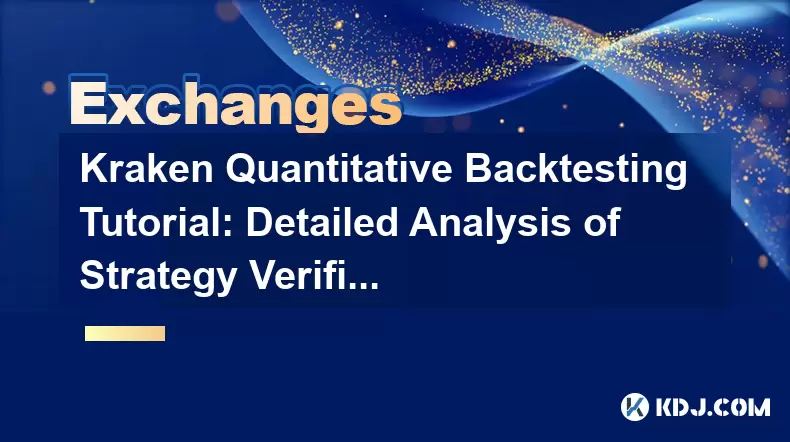
Kraken Quantitative Backtesting Tutorial: Detailed Analysis of Strategy Verification Steps
Jun 05,2025 at 02:35pm
Kraken Quantitative Backtesting Tutorial: Detailed Analysis of Strategy Verification Steps Backtesting is a critical component of developing and refining trading strategies in the cryptocurrency market. It allows traders to evaluate the performance of their strategies using historical data before risking real capital. Kraken, a prominent cryptocurrency ...
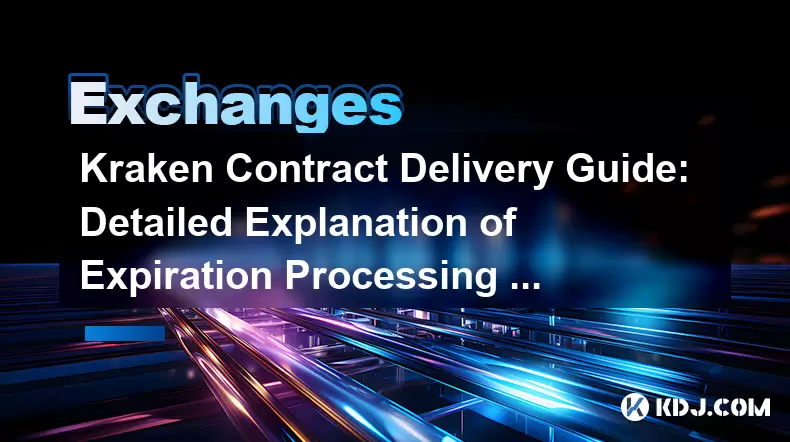
Kraken Contract Delivery Guide: Detailed Explanation of Expiration Processing Operation
May 31,2025 at 09:36am
Kraken, one of the leading cryptocurrency exchanges, offers a variety of trading options, including futures contracts. Understanding how to manage contract expirations is crucial for traders to maximize their returns and minimize potential losses. This guide provides a detailed explanation of the expiration processing operation on Kraken, ensuring you a...
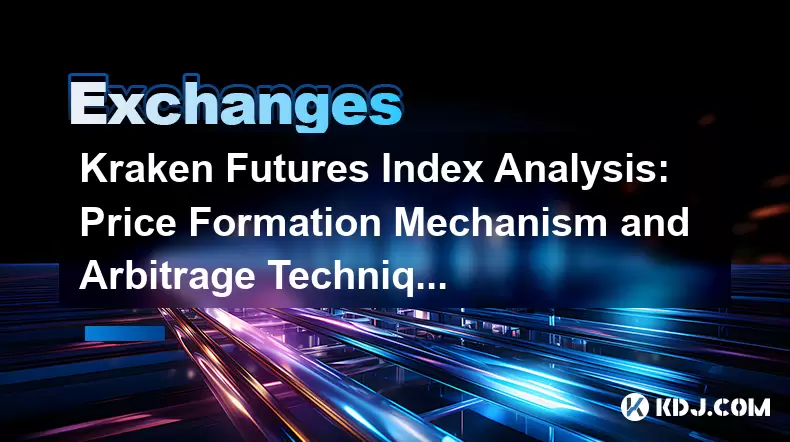
Kraken Futures Index Analysis: Price Formation Mechanism and Arbitrage Techniques
May 31,2025 at 02:42pm
Introduction to Kraken Futures IndexThe Kraken Futures Index is a crucial tool for traders and investors within the cryptocurrency market. It serves as a benchmark for futures contracts traded on the Kraken platform, providing insights into the price movements and market sentiment of various cryptocurrencies. Understanding the price formation mechanism ...

Kraken Futures Leverage Adjustment: Detailed Explanation of Position Rebalancing Operation Steps
Jun 06,2025 at 10:36am
Kraken Futures offers traders the ability to adjust leverage on their positions, which is a crucial aspect of managing risk and maximizing potential returns. In this article, we will delve into the detailed steps of how to perform a leverage adjustment and rebalance your positions on Kraken Futures. Whether you are a seasoned trader or new to the platfo...

Kraken Cross-Product Arbitrage: Analysis of Correlation Trading Strategy Skills
May 31,2025 at 04:08am
Introduction to Kraken Cross-Product ArbitrageKraken, one of the leading cryptocurrency exchanges, offers a diverse range of trading products, including spot trading, margin trading, and futures trading. Cross-product arbitrage on Kraken involves exploiting price differences between these different trading products to generate profits. This strategy req...

Kraken Dark Pool Trading Introduction: Detailed Explanation of Privacy Trading Operation Steps
Jun 02,2025 at 12:14pm
Kraken, one of the leading cryptocurrency exchanges, offers a unique feature known as Dark Pool Trading. This service is designed to provide traders with enhanced privacy and reduced market impact when executing large orders. In this article, we will delve into the specifics of Kraken's Dark Pool Trading, explaining what it is, why it's beneficial, and ...

Kraken Quantitative Backtesting Tutorial: Detailed Analysis of Strategy Verification Steps
Jun 05,2025 at 02:35pm
Kraken Quantitative Backtesting Tutorial: Detailed Analysis of Strategy Verification Steps Backtesting is a critical component of developing and refining trading strategies in the cryptocurrency market. It allows traders to evaluate the performance of their strategies using historical data before risking real capital. Kraken, a prominent cryptocurrency ...

Kraken Contract Delivery Guide: Detailed Explanation of Expiration Processing Operation
May 31,2025 at 09:36am
Kraken, one of the leading cryptocurrency exchanges, offers a variety of trading options, including futures contracts. Understanding how to manage contract expirations is crucial for traders to maximize their returns and minimize potential losses. This guide provides a detailed explanation of the expiration processing operation on Kraken, ensuring you a...

Kraken Futures Index Analysis: Price Formation Mechanism and Arbitrage Techniques
May 31,2025 at 02:42pm
Introduction to Kraken Futures IndexThe Kraken Futures Index is a crucial tool for traders and investors within the cryptocurrency market. It serves as a benchmark for futures contracts traded on the Kraken platform, providing insights into the price movements and market sentiment of various cryptocurrencies. Understanding the price formation mechanism ...
See all articles

























































































